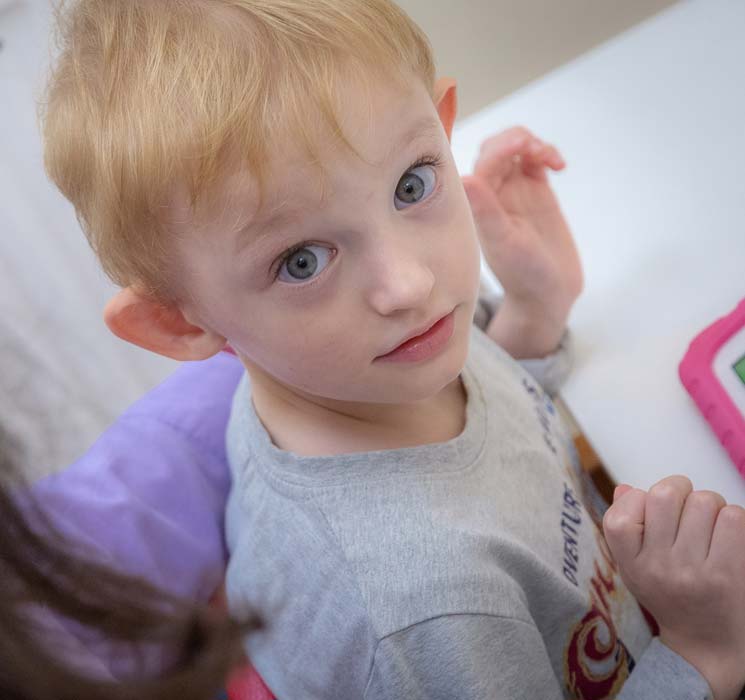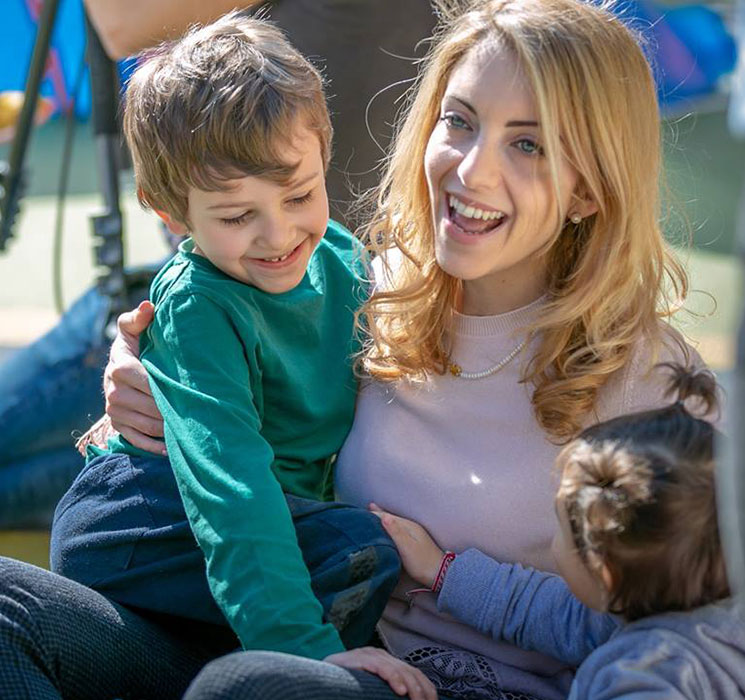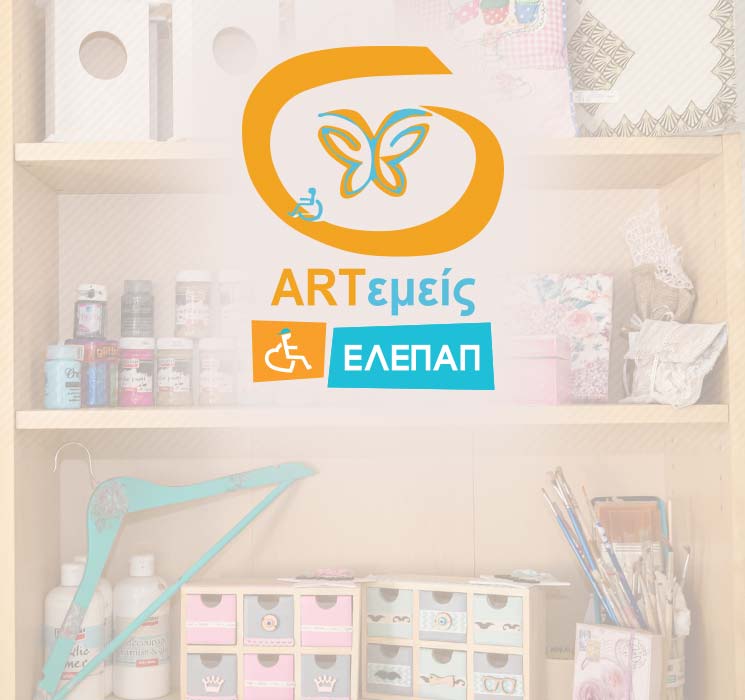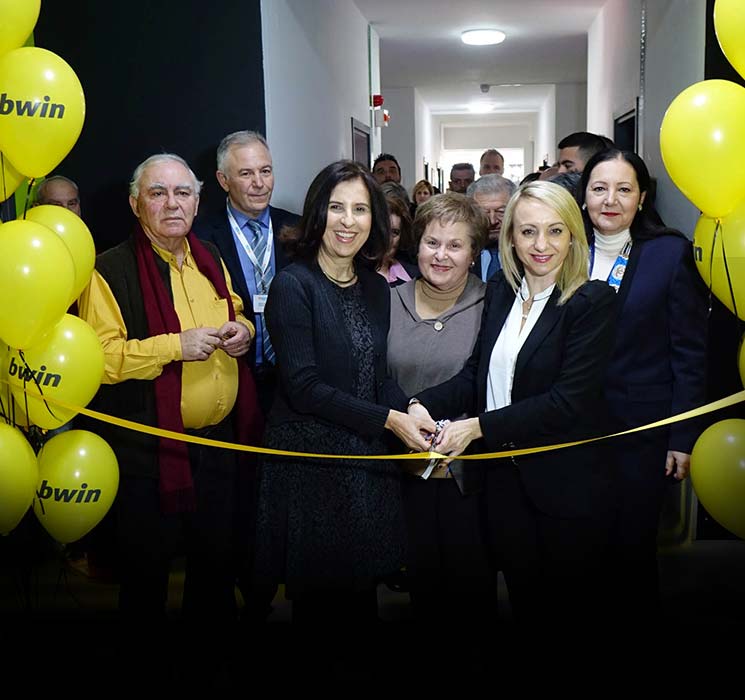Aquatic Therapy
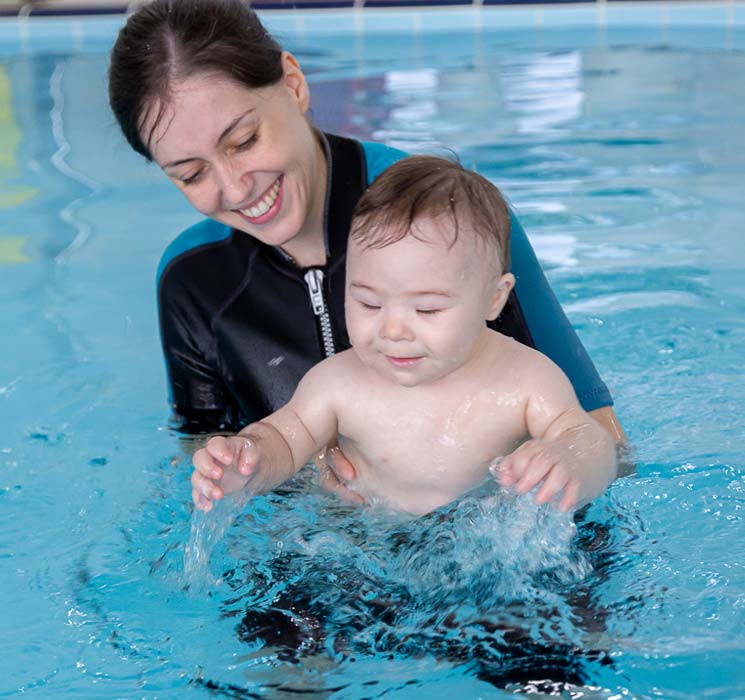
Aquatic Therapy is a program that guides children gradually to sensations and movements in the water and takes on the form of a mobility lesson. It aims at:
- Familiarization and mental adaptation to the water
- Changing the mobility behavior to achieve balance and
- Acquiring the ability to move independently in the water
The whole effort culminates in independent swimming
We strive to familiarize children with water, to make them feel confident when in the water. The therapy includes songs and games which incorporate therapeutic objectives.
Moreover, water is very forgiving and has a soothing effect, which is beneficial for children’s physical development. At the same time, it activates the senses while encouraging socialization and improving children’s social, emotional and cognitive development.
This intervention also plays a major role for infants, helping them on various levels - mental, motor and sensory. Aquatic Therapy for Infants is a program which enables approaching infants in the liquid medium with which they are still familiar. The Program is applied in an interactive joyful environment promoting safety and acceptance.
Motor control is achieved though the Ten-Point-Program of the Halliwick concept, which provides endless possibilities for individual and group activities which have a specific objective. This sensory-motor sequence is based on learning motor control and is related to the neurodevelopmental models.
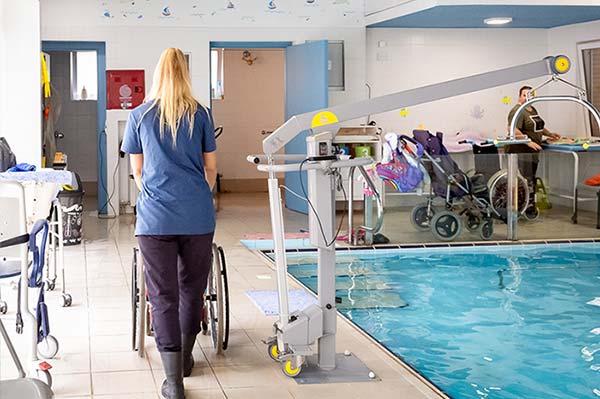
Using the Ten Points, we can see the development process through:
- Mental adjustment
- Balance control
- Movement which brings independence in the water
These three concepts are the essential elements of Motor Learning
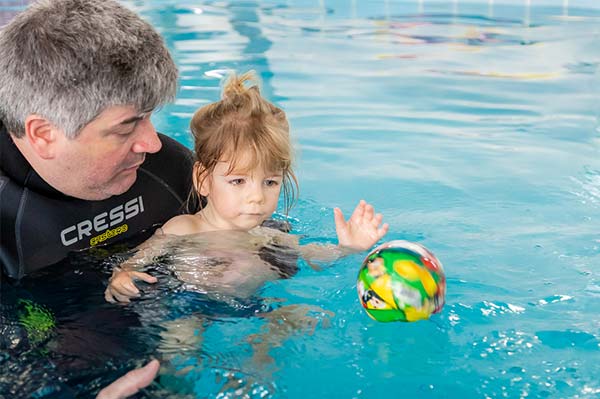
Halliwick Aquatic therapy specifically focuses on children with physical or learning disabilities, helps them join in aquatic activities, move independently in the water and swim (Ι.ΗΑ- HALLIWICK CONCEPT 2000).
The primary goal of the Halliwick concept is for a child with disability to join in therapeutic and recreational activities where independence in the water is a requirement.
This Halliwick concept approach that uses games and activities, is in line with the ICF since the focus is on participation but the physical condition and physical functioning are also taken into account at every level (WHO 2001).
Aquatic Therapy looks into the process of motor learning as an interaction of the person with the activity and with the surroundings and focuses on behavior at three levels:
- the level of functional activity
- the underlying sensory, motor and cognitive disorders which block motor control
- the internal factors such as thought, will and incentives that are necessary components of the Motor Learning process.
Children with neurological disorders (coordination, understanding, perception problems) need to learn balance before they learn to swim (start and control of the movement). Achieving and maintaining balance is not simple and is often impossible for these children because it requires adjusting to the mechanical changes occurring in their surroundings.
Opportunities to practise movement in the aquatic environment may facilitate new patterns that increase recognition and understanding of different concepts of motor learning, of sensory processing and cognitive learning and develop the ability to organise movement patterns and control of everyday life activities.
These adjustments result from a psycho-sensory motor learning process with which the person maintains balance in unstable surroundings.
In this sense, Aquatic Therapy is a problem-solving approach.
The physiotherapist uses the principles of hydrodynamics of the (warm) water to work on the sensory motor bonds using the Halliwick concept therapy model of choice- adjusted to the abilities and the limitations of each swimmer. The physiotherapy intervention helps the person function at maximum potential and continuously reach higher levels of motor independence.
- Assessing the child on land: The first physiotherapy assessment takes place on land. The child’s potential and limitations are analyzed in view of a systematic intervention in the water that is holistic and needs-based.
- The main goal of the therapy: The goal of the therapy should be set from the start.
During the first stage, the child must go into the water feeling safe. The method introduces a new environmental factor that will make a difference on the balance and movement control strategies and therefore the child must be mentally and emotionally familiar with the aquatic environment before the therapy starts. Depending on the child’s age and abilities the physiotherapist must choose the most appropriate activities which will familiarize the swimmer with the qualities of the water, must prepare breath control and achieve optimal relaxation. The child’s abilities and experiential learning are very important to us.
- Prioritizing and dealing with the child’s problems in the water
During the second stage, the physiotherapist must deal with a number of problems related to the specific heterogeneity of Cerebral Palsy such as the quality of muscle tone, changes in the body shape, specific density, lack of symmetry and other accompanying problems.
Here the physiotherapist is called upon to intervene with special exercises at immersion height and to use special holds at key-points to help the child learn to maintain balance in an unstable and three-dimensional environment and to control rotation around all the body axes.
As soon as the child learns to balance it can start to perform movements and activities which are difficult to perform on land.
Of course, movements and skills acquired in the water cannot be reproduced on land but the child will certainly bring to land the experiential motor learning, the attitude, the in-depth knowledge, the wish to play and interact with peers in the water.
- Achieving the goal of independence
The goal of independence is achieved during the third stage with the use of controlled movement and it is often the basis of independent swimming.
The Wota 1 and Wota 2 tests which are recognized and reliable evaluation tools of functional independence in the aquatic environment are used for in-water evaluation. They are based on the Halliwick concept and designed for swimmers with functional and cognitive limitations.
Underwater music and Aquatic Therapy (Liquid Vibrations) is an innovative program combining underwater music and sound with the benefits of Aquatic Therapy.
Underwater music and Aquatic Therapy (Liquid Vibrations) is an innovative program combining underwater music and sound with the benefits of Aquatic Therapy.
The underlying idea is that sound vibrations in the water can facilitate the person’s awareness and interaction with their surroundings.
The perception of sound in the water is not the same as in the air because the transmission velocity is 4.5 times higher. The sound vibrations are conveyed through the skeletal system (skull, spine and thorax) and the inner ear, creating the impression that the sound also originates from inside the body.
According to the principles of Aquatic Therapy, feeling the sound while moving in the water promotes relaxation, strengthens the movement and makes it easier to put the head in the water.
The Liquid Vibrations program is designed for children with multiple disabilities and different levels of functioning.
For the purpose of the program, underwater speakers are connected to an outside console and placed in the pool. Three kinds of sounds and music are selected for Aquatic Therapy sessions:
- Tonic- familiar music
- Abstract music
- Narrative sounds
This program has three types of benefits:
- Learning: Acoustic sessions create interactive acoustic environments and become the basis for perceiving and understanding surroundings (people, animals, marine animals, places, events)
- Physical: Observations have shown that during acoustic sessions children want to listen to the music underwater thus making it easier for them to immerse their ears, face and head and they reach the stage of mental adaptation faster.
- Emotional: Listening to music underwater is an emotionally beneficial introspective experience.
- Occupational therapy
- Aquatic therapy
- Speech therapy
- Therapeutic riding
- Biofeedback
- Music therapy
- Sensory Integration
- Assistive Technology A/T


